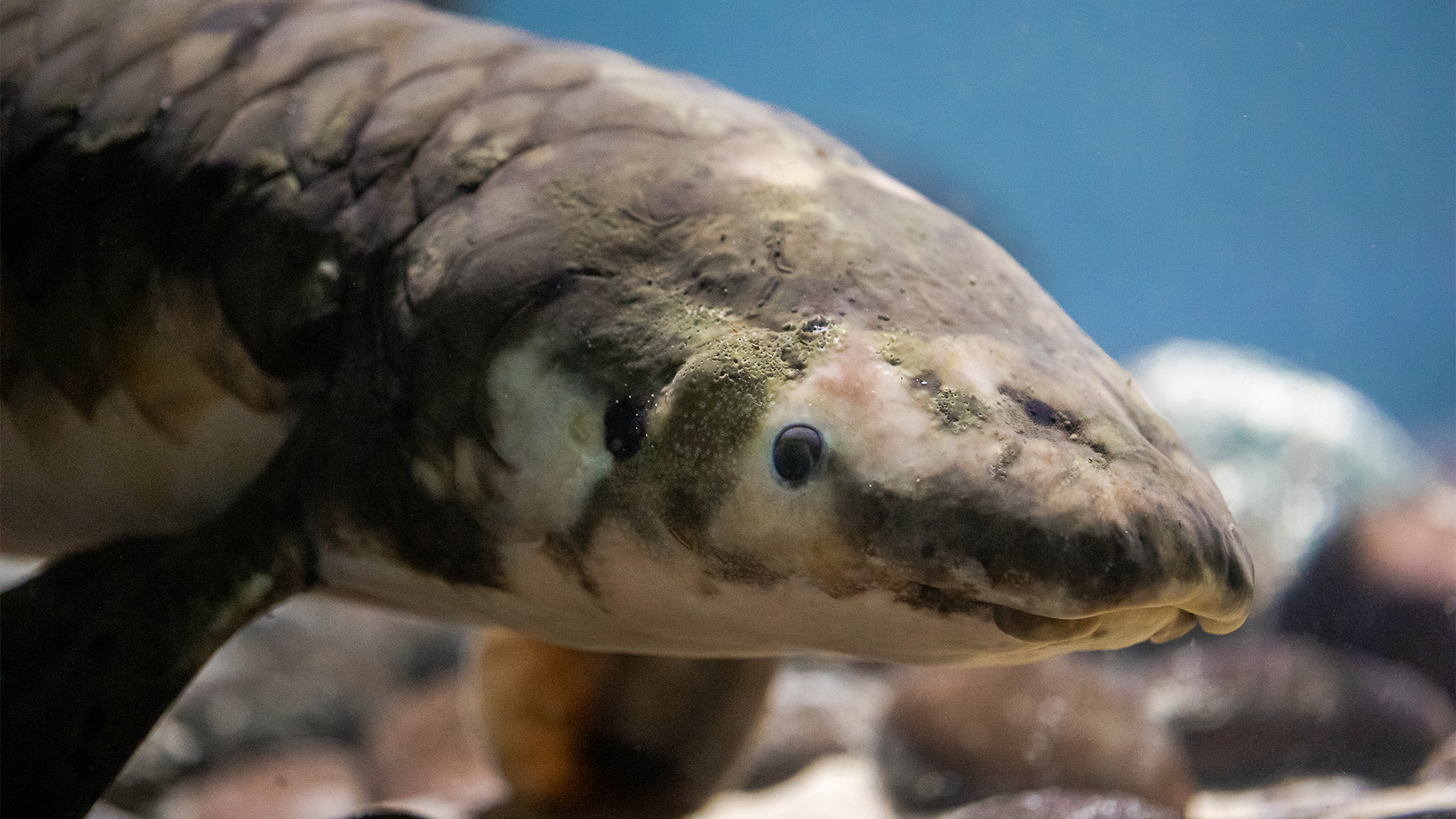

The world’s oldest living aquarium fish is actually even older than scientists initially believed. According to an analysis by the California Academy of Sciences, the Steinhart Aquarium’s beloved Australian lungfish named Methuselah is estimated to be about 92 years old, with a high-estimate of over 100.
[Related: Hogfish ‘see’ using their skin.]
Meet Methuselah
Native only to two river systems in Australia, this type of lungfish can actually breathe air. They use a single lung when the streams they live in are more dry than usual or when the water quality changes, according to the Australian Museum. They typically have olive green, black, or brown scales and a body shaped like a torpedo with a flattened snout. While the species is over 100 million years old, they are listed as Endangered on the IUCN Red List. They are very sensitive to human-caused changes to its habitat, primarily damming, that can increase sediment levels in the water.

Methuselah first arrived at the San Francisco aquarium in 1938, aboard a Matson Navigation Company liner. She has outlived the 231 other fish from Australia and Fiji that arrived with her, back when Franklin D. Roosevelt was in his second term as President of the United States and Back to the Future’s Christopher Llloyd was only a baby.
In the many decades since, Methuselah has become famous in the area for not only her advanced age, but a seemingly charming personality and a puppy-like love of belly rubs. The knowledge of her age is helpful in the context of a larger study on how to more accurately determine the age of lungfish in the wild and help conservation efforts. She was previously estimated to be about 84 years old.
“Although we know Methuselah came to us in the late 1930s, there was no method for determining her age at that time, so it’s incredibly exciting to get science-based information on her actual age,” Steinhart Aquarium’s Curator of Aquarium Projects Charles Delbeek, said in a statement. “Methuselah is an important ambassador for her species, helping to educate and stoke curiosity in visitors from all over the world. But her impact goes beyond delighting guests at the aquarium: Making our living collection available to researchers across the world helps further our understanding of biodiversity and what species need to survive and thrive.”
[Related: Trumpetfish use other fish as camouflage.]
How scientists determined the age of the oldest living aquarium fish
Estimating ages for ancient and long-lived fish like lungfish is technically challenging and has traditionally relied on more invasive and sometimes lethal methods to determine the age of fishes, including removing scales and examining inner ear bones called otoliths. The new age detection method used to estimate Methuselah’s age only uses a small tissue sample from a fin clip and the team believed that this method can be applied to other threatened species, without impacting threatened populations or the animal’s health.
The DNA analysis for this new estimate was led by Ben Mayne of Australia’s Commonwealth Scientific and Industrial Research Organisation (CSIRO) and David T. Roberts of Australian water authority Seqwater. Their upcoming study included Methuselah, two other lungfish belonging to the California Academy of Sciences (ages 54 and 50), and 30 other lungfish from six institutions in Australia and the United States. It created a catalog of living lungfish with the goal of advancing more accurate DNA-based age clocks for the species native to Australia. This new analysis also found that she could be as old as 101.
“For the first time since the Australian lungfish’s discovery in 1870, the DNA age clock we developed offers the ability to predict the maximum age of the species,” said Mayne. “Accurately knowing the ages of fish in a population, including the maximum age, is vital for their management. This tells us just how long a species can survive and reproduce in the wild, which is critical for modeling population viability and reproductive potential for a species.”
Their original paper detailing how this age prediction method works was published in June 2021 in the journal Molecular Ecology Resources and offers a description of how threatened fish can be safely aged with DNA methylation methods.
“Methuselah’s age was challenging to calculate as her age is beyond the currently calibrated clock. This means her actual age could conceivably be over 100, placing her in the rare club of fish centenarians. While her age prediction will improve over time, she will always live beyond the calibrated age clock, as no other lungfish we know is older than Methuselah,” said Roberts.
